The Earth’s deep mantle, climate change and the dawn of humans
 The East African Rift (EAR) is the most prominent rift system on Earth and transects the high-elevation East African Plateau. It is a biodiversity hotspot and the oldest known human ancestors have been found within its confines, making it a natural laboratory for interdisciplinary research straddling Earth and Life Sciences. Here we propose a truly transdisciplinary project, combining Paleobiology, Meteorology and Geology, that takes advantage of the symbiosis between the Swedish Museum of Natural History and Stockholm University. Read more The East African Rift (EAR) is the most prominent rift system on Earth and transects the high-elevation East African Plateau. It is a biodiversity hotspot and the oldest known human ancestors have been found within its confines, making it a natural laboratory for interdisciplinary research straddling Earth and Life Sciences. Here we propose a truly transdisciplinary project, combining Paleobiology, Meteorology and Geology, that takes advantage of the symbiosis between the Swedish Museum of Natural History and Stockholm University. Read more
How climate controls the evolution of mountain ranges
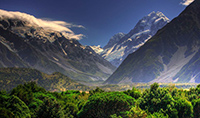 Life and death of mountains (orogens) is what Geology is all about. Over the last two decades the mutual feedback between climate and mountain building has added an interdisciplinary component to mountain building and became a major theme in Earth System Science. The Southern Alps of New Zealand are one of the best targets for climate/tectonics research, because they are a young, pristine, active orogen undergoing rapid uplift, have been subjected to the Quaternary glacial-interglacial cycles, and have developed a pronounced rain shadow at... Read more Life and death of mountains (orogens) is what Geology is all about. Over the last two decades the mutual feedback between climate and mountain building has added an interdisciplinary component to mountain building and became a major theme in Earth System Science. The Southern Alps of New Zealand are one of the best targets for climate/tectonics research, because they are a young, pristine, active orogen undergoing rapid uplift, have been subjected to the Quaternary glacial-interglacial cycles, and have developed a pronounced rain shadow at... Read more
Trying to resolve the mystery of the uplift of the Al Hajar Mountains in Oman
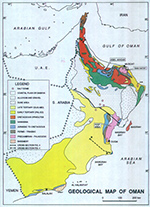 The development of mountainous topography (uplift) is one of the most fascinating aspects of continental tectonics as high mountain ranges can significantly alter the climate on Earth. High topography can either by supported by upwelling hot mantle material or is being caused by shortening and associated thickening of relatively light continental crust. Probably the most eminent questions are the timing and rates of uplift. An intriguing and very poorly understood example of mountain uplift is the Al Hajar Mountains in Oman. Read more... The development of mountainous topography (uplift) is one of the most fascinating aspects of continental tectonics as high mountain ranges can significantly alter the climate on Earth. High topography can either by supported by upwelling hot mantle material or is being caused by shortening and associated thickening of relatively light continental crust. Probably the most eminent questions are the timing and rates of uplift. An intriguing and very poorly understood example of mountain uplift is the Al Hajar Mountains in Oman. Read more...
Testing tectonic concepts for the Seve Nappe Complex, Swedish Caledonides
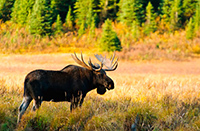 The recent COSC (Collisional Orogeny in Scandinavian Caledonides) initiative (Gee et al., 2010) motivated new interest in studying the nappe structure in the Scandinavian Caledonides (Gee, 1978). While the thrust at the base of the Seve Nappe Complex (Bergman et al., 2012) records a top-ESE displacement, the upper contact of this thrust nappe stack with the Köli Nappe Complex (Bergman et al., 2012) has a more complicated history and top-ESE and also top-WNW shear sense indicators have been reported (Trouw, 1973; Greiling et al., 2007) from southern Västerbotten and... Read more The recent COSC (Collisional Orogeny in Scandinavian Caledonides) initiative (Gee et al., 2010) motivated new interest in studying the nappe structure in the Scandinavian Caledonides (Gee, 1978). While the thrust at the base of the Seve Nappe Complex (Bergman et al., 2012) records a top-ESE displacement, the upper contact of this thrust nappe stack with the Köli Nappe Complex (Bergman et al., 2012) has a more complicated history and top-ESE and also top-WNW shear sense indicators have been reported (Trouw, 1973; Greiling et al., 2007) from southern Västerbotten and... Read more
The Southern Alps Foreland System, New Zealand
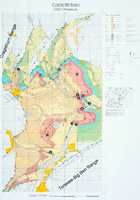 The West Coast region of the South Island and adjacent areas offshore occupy a domain of Australian crust that collides with the Pacific crust along the Alpine Fault. The Australian crust has the imprint of a lengthy deformation history (Paleozoic-Early Cretaceous terrane accretion at the Gondwana margin; Late Cretaceous to Eocene rifting; compressional inversion of earlier faults coeval with the development of the Pacific-Australia plate boundary since 25 Ma) and its ongoing shortening is testified by a record of large (M6–M7) historical earthquakes. Read more... The West Coast region of the South Island and adjacent areas offshore occupy a domain of Australian crust that collides with the Pacific crust along the Alpine Fault. The Australian crust has the imprint of a lengthy deformation history (Paleozoic-Early Cretaceous terrane accretion at the Gondwana margin; Late Cretaceous to Eocene rifting; compressional inversion of earlier faults coeval with the development of the Pacific-Australia plate boundary since 25 Ma) and its ongoing shortening is testified by a record of large (M6–M7) historical earthquakes. Read more...
Continental extensional tectonics
 Continental break-up and the formation of oceanic basins is a fundamental process in Earth Sciences. In controlling continental break-up, extensional tectonics is one of the most fundamental processes that shape the face of our planet. Extension and break-up is key to understanding the evolution of continents, and the origin of sedimentary basins and their hydrocarbon potential, as well as the thermohaline circulation in the oceans and thus global climate. Yet, the mechanisms by which continents split apart are poorly known. Read more... Continental break-up and the formation of oceanic basins is a fundamental process in Earth Sciences. In controlling continental break-up, extensional tectonics is one of the most fundamental processes that shape the face of our planet. Extension and break-up is key to understanding the evolution of continents, and the origin of sedimentary basins and their hydrocarbon potential, as well as the thermohaline circulation in the oceans and thus global climate. Yet, the mechanisms by which continents split apart are poorly known. Read more...
The uplift of the world’s highest rift mountains: The Rwenzori’s in Uganda, East African Rift system
This project looks at uplift processes in extensional settings, thereby creating an innovative new research field bridging between tectonics and global climate change. The >5,000 m high Rwenzori Mountains just north of the equator in the Ugandan part of the East African Rift are the most extreme expression of uplift in an extensional setting on Earth. Because of the high altitude the Rwenzori Mountains are the only uplifted basement block in Africa that is glaciated and provide evidence for glaciations in the past. Read more...
Structural characterisation of geothermal fields
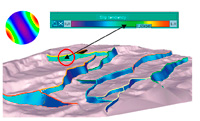 Geothermal fields might become a major energy source in the near future and important structural problems are the relationships between the local and regional stress field, joint patterns and the characterization of fluid pathways. For exploration and production, the stimulation of reservoirs through hydraulic fracturing and their potential monitoring by magnetotelluric methods are major topics. Read more... Geothermal fields might become a major energy source in the near future and important structural problems are the relationships between the local and regional stress field, joint patterns and the characterization of fluid pathways. For exploration and production, the stimulation of reservoirs through hydraulic fracturing and their potential monitoring by magnetotelluric methods are major topics. Read more...
|